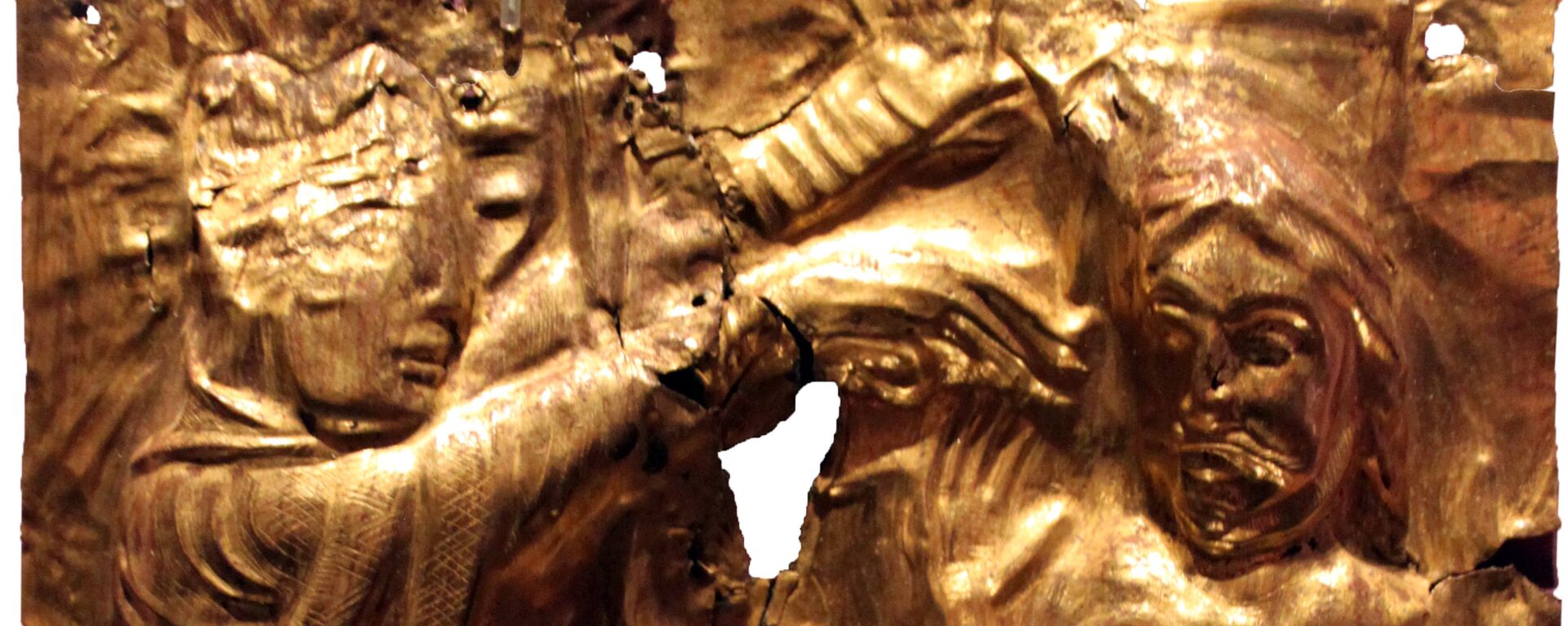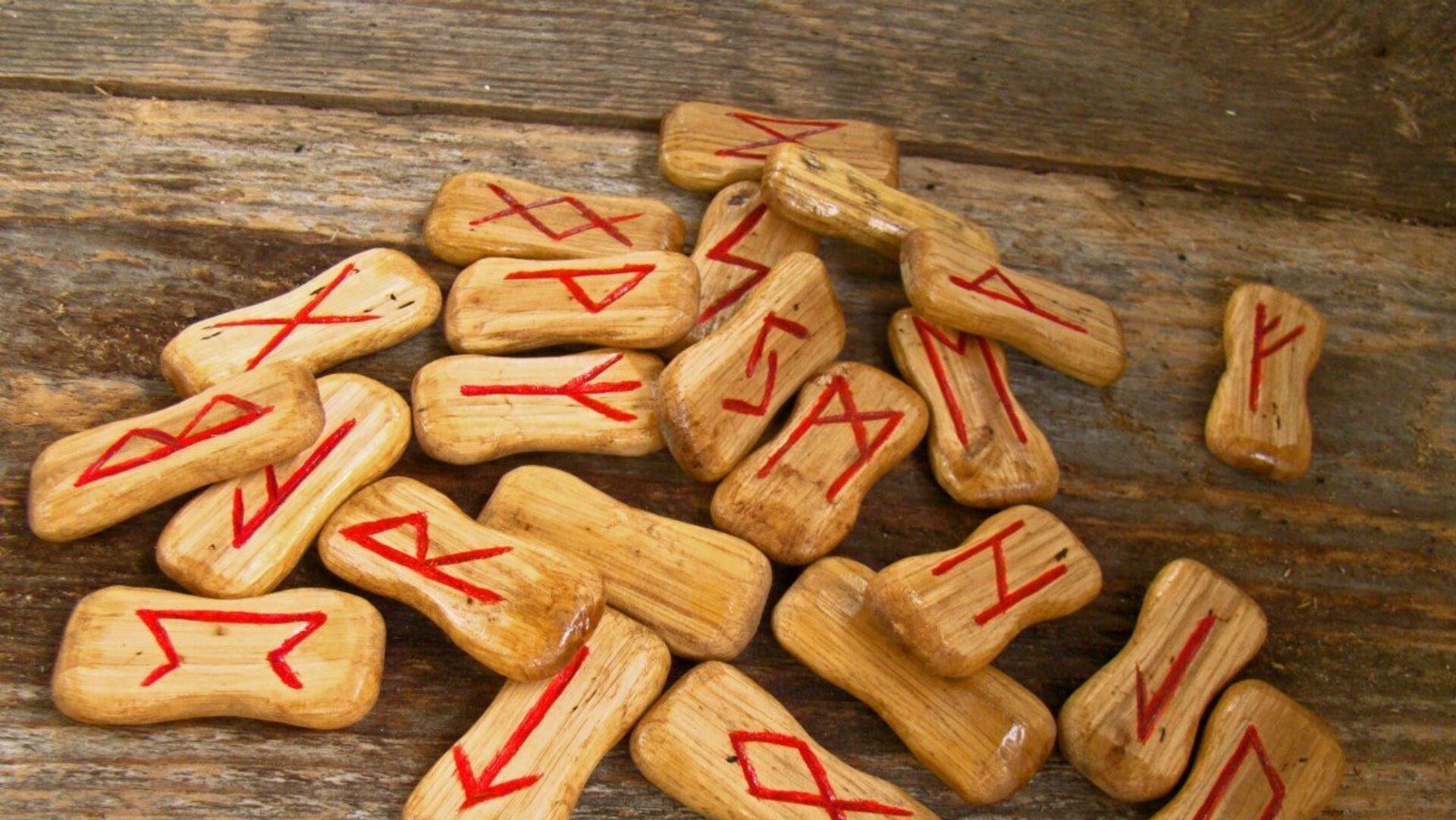https://sputnikglobe.com/20230118/sensational-2000-year-old-runestone-rewrites-norse-history-1106446047.html
'Sensational' 2,000-Year-Old Runestone Rewrites Norse History
'Sensational' 2,000-Year-Old Runestone Rewrites Norse History
Sputnik International
According to the researchers, this may be one of the earliest attempts to use runes in Norway and Scandinavia.
2023-01-18T08:24+0000
2023-01-18T08:24+0000
2023-01-18T08:24+0000
science & tech
runes
history
ancient history
vikings
norway
scandinavia
https://cdn1.img.sputnikglobe.com/img/107522/48/1075224815_0:0:1200:676_1920x0_80_0_0_4c0d1d40d996f9d02f8eb170e9c6c859.jpg
The world's oldest 2,000-year-old runestone has been unearthed in the Hole municipality in Norway, making it several hundred centuries older than previous discoveries.The sandstone rock, measuring some 30 by 30 centimeters, was found during the excavation of an ancient burial ground in late 2021, at Tyrifjorden in northwest of Oslo, prior to the construction of a railway line, but took a while to analyze.According to Oslo's Museum of Cultural History, the carbon dating of bones and wood found in a nearby grave suggested that the runes were etched sometime between year one and 250 AD.Runestones inscribed with runic letters, the oldest alphabet known in Scandinavia, are most commonly associated with the Viking Age that occurred between late 8th and mid-11th century.However, the discovery, which could date from as early as the dawn of our era, was called a "dream for runologists" by the museum."This runic discovery is the most sensational thing that I, as a runologist, have gotten my hands on during my whole life. It is incredibly educational and inspiring," she added.However, its origin remains a mystery, as is the word written in runes. Scientists believe the stone was made in memory of the man who was found in a grave that the archaeologists uncovered nearby.So far, the researchers concluded that this may be one of the earliest attempts to use runes in Norway and Scandinavia. Further research may shed new light on the use of runes in the early Iron Age.Runic alphabets native to the Germanic peoples were used before the adoption of the Latin alphabet, as well as for specialized purposes thereafter. In addition to representing a sound value (phonemes), runes can be used to represent the concepts after which they are named (ideographs). The Scandinavian variant is commonly known as Futhark derived from their first six letters of the script.
https://sputnikglobe.com/20230112/giant-viking-hall-possibly-linked-to-king-harald-bluetooth-unearthed-in-denmark-1106243218.html
norway
scandinavia
Sputnik International
feedback@sputniknews.com
+74956456601
MIA „Rossiya Segodnya“
2023
News
en_EN
Sputnik International
feedback@sputniknews.com
+74956456601
MIA „Rossiya Segodnya“
Sputnik International
feedback@sputniknews.com
+74956456601
MIA „Rossiya Segodnya“
norse runes, old norse, pre-christian writing system, ancient runestones, early iron age
norse runes, old norse, pre-christian writing system, ancient runestones, early iron age
'Sensational' 2,000-Year-Old Runestone Rewrites Norse History
The researchers concluded that the runestone stemming from the dawn of our era may be one of the earliest attempts to use runes in Norway and Scandinavia.
The world's oldest 2,000-year-old runestone has been unearthed in the Hole municipality in Norway, making it several hundred centuries older than previous discoveries.
The sandstone rock, measuring some 30 by 30 centimeters, was found during the excavation of an ancient burial ground in late 2021, at Tyrifjorden in northwest of Oslo, prior to the construction of a railway line, but took a while to analyze.
According to Oslo's Museum of Cultural History, the carbon dating of bones and wood found in a nearby grave suggested that the runes were etched sometime between year one and 250 AD.
Runestones inscribed with runic letters, the oldest alphabet known in Scandinavia, are most commonly associated with the Viking Age that occurred between late 8th and mid-11th century.
However, the discovery, which could date from as early as the dawn of our era, was called a "dream for runologists" by the museum.
"We thought that the first ones in Norway and Sweden appeared in the years 300 or 400, but it turns out that some runestones could be even older than we previously believed," runologist and professor Kristel Zilmer told Norwegian media, calling it a "unique discovery."
"This runic discovery is the most sensational thing that I, as a runologist, have gotten my hands on during my whole life. It is incredibly educational and inspiring," she added.
However, its origin remains a mystery, as is the word written in runes. Scientists believe the stone was made in memory of the man who was found in a grave that the archaeologists uncovered nearby.

12 January 2023, 11:12 GMT
So far, the researchers concluded that this may be one of the earliest attempts to use runes in Norway and Scandinavia. Further research may shed new light on the use of runes in the early Iron Age.
Runic alphabets native to the Germanic peoples were used before the adoption of the Latin alphabet, as well as for specialized purposes thereafter. In addition to representing a sound value (phonemes), runes can be used to represent the concepts after which they are named (ideographs). The Scandinavian variant is commonly known as Futhark derived from their first six letters of the script.


